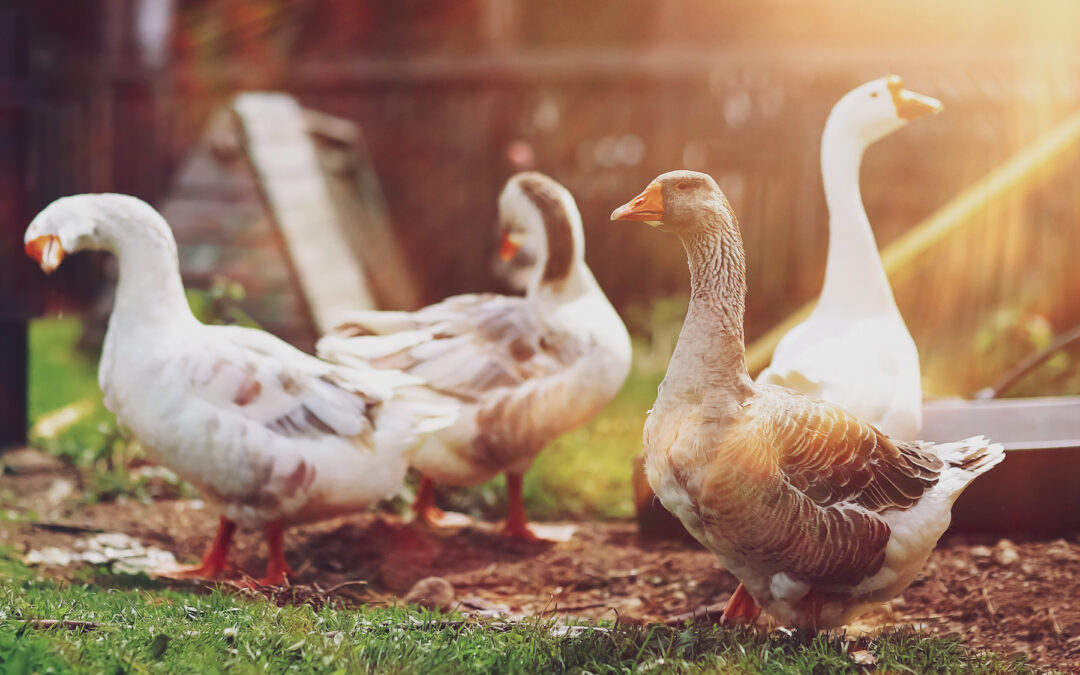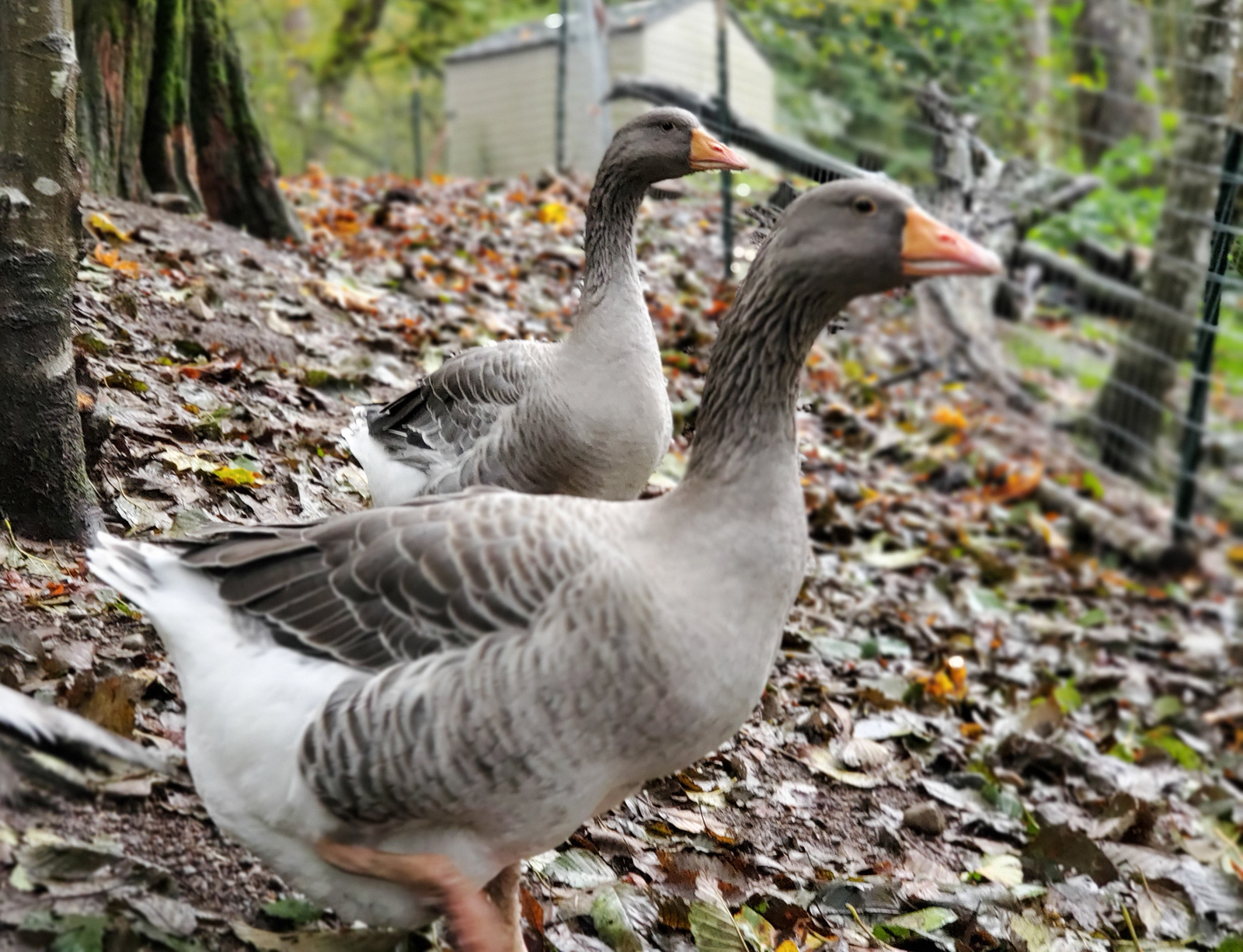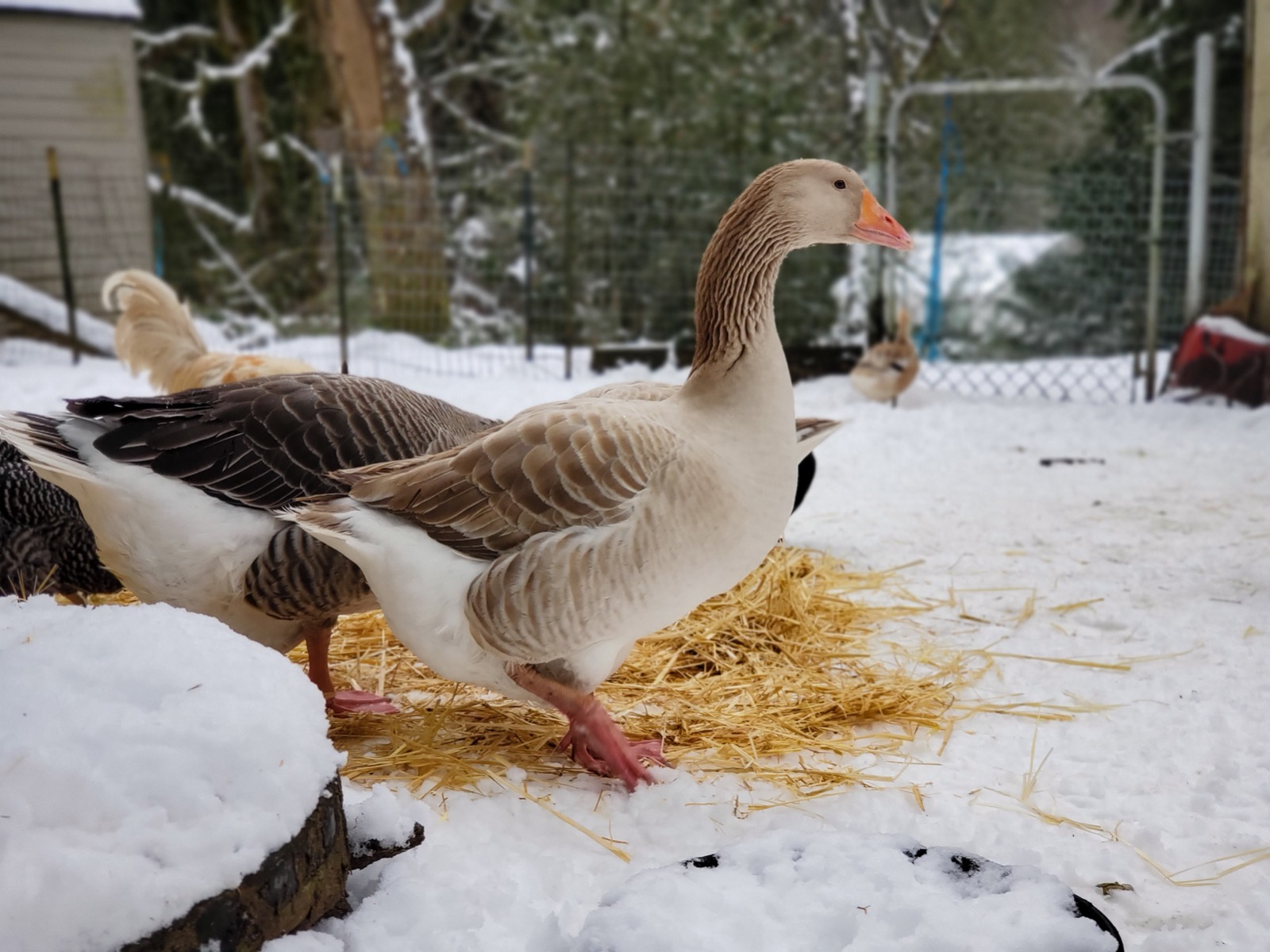Raising Geese
As hard as it is to imagine, geese are much easier to raise than chickens. Unlike chickens which scratch and destroy any and all greenery, geese are grazers. A small gaggle (group) of geese can be found grazing grass and napping throughout the day. Depending on the breed they can be excellent broodies and mothers.
There are a few important tips one needs to know prior to incorporating geese onto the property. Geese thrive best when given the proper space to roam, greens to consume, and high quality feed options.
Housing
Raising geese does not require anything fancy when it comes to housing. In fact, they prefer to be outdoors regardless if it is winter, raining, or during the summer months. Unfortunately, predators make it difficult to allow your flock to remain outdoors without protection.
Constructing a three wall shelter within an enclosed run will keep your geese secure during the evenings. Unless you are utilizing your geese as a livestock guardian, it is best to house them separately from your other poultry. Geese, at times, can be bullies, especially in close quarters. However, geese do quite well with other poultry during free ranging.
Feed and Free Ranging
Geese can survive quite well on water and grass. As a matter of fact, a goose raised on only grass is known as a “grass goose”. These birds are often butchered at 12 weeks of age, right after their first feathering.
Geese which are kept throughout the winter months will need their feed supplemented with a balanced feed option and any greens from kitchen scraps.
Raising Geese for Meat and other Products
The one thing you need to realize about raising geese is that this species of waterfowl tends to imprint on their keepers heavier than any other waterfowl species. Which means, it can be difficult for many to butcher birds which leave a loving impression on us.
Meat
With that said, raising geese for meat provides a substantial amount of meat for the freezer. Much like ducks and Muscovy, geese produce a rich, dark meat which is prepared similarly to how beef is prepared. Like other waterfowl, geese are known to produce a greasy product due to the fat content of the bird.
Greasy meat or not, the meat is prized and can be enjoyed roasted with a ginger lime dressing or smoked in an apple juice brine.
Liver and Fat
To live a sustainable homesteading life one needs to appreciate and consume nutrient dense foods. Liver is the highest nutrient-dense food to consume. Creating a liver pate not only creates a no waste process, it also ensures you are consuming an extremely healthy food item.
In addition to the liver, make sure to render the fat found in the skin to make a healthy cooking grease. Waterfowl fat is a good fat, containing monounsaturated and polyunsaturated fats, and very little saturated fat. Geese fat can be used as one would use olive oil or vegetable oil.
Feathers
The prized, and pricy, down feather pillow and comforter, is now achievable! That is, once you have enough down feathers to complete the project. Prior to using the down feathers for bedding, make sure to wash the feathers in liquid dish soap and lay them out to dry.
Feet
Utilizing poultry feet is not a common practice in the United States. However, once you have properly cleaned and peeled the feet they can be used in soups and to make bone broth. Poultry feet contain high amounts of collagen to help relieve joint discomfort, good skin health, and prevent bone loss.
Best Geese Breeds for Meat
Realistically, regardless of the breed, all geese breeds can be consumed. However, there are specific traits one looks for when selecting a meat breed:
- overall weight
- feather coloring
- butchering age
Most commercial poultry breeds which are used for meat production have white feathers. Take for example, the Cornish Cross Roasters, Delaware Broiler, Jumbo Pekin, and Giant White Turkeys. These birds pluck clean, leaving no colored pin feathers behind, making for a beautiful presentation at the dinner table. If the thought of seeing pin feathers left in the carcass disturbs you, it is best to select geese breeds which are white in color.
The best age to butcher ganders and geese is between 9, 15, 20 weeks.
| BREED | FEATHER COLOR | LIVE WEIGHT |
| French Toulouse | Grey | 15 to 26 pounds |
| American Buff | Buff | 16 to 18 pounds |
| Embden (German) | White | 20 to 26 pounds |
| African | Grey, Brown, or White | 18 to 20 pounds |
| Chinese | Brown or White | 11 to 12 pounds |
| Pilgrim | White or Grey | 13 to 14 pounds |
Quality of the Breed
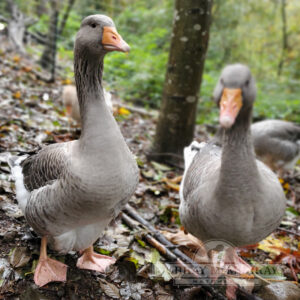 It is the French Toulouse which is prized for its ability to put on weight quickly, but also for its culinary delight, the fatty liver, pate de foie gras (French for “fatty liver”). The harvesting of a fatty liver requires the goose consume a high protein feed in addition to allow the bird very little movement. Meaning, no free ranging for this breed.
It is the French Toulouse which is prized for its ability to put on weight quickly, but also for its culinary delight, the fatty liver, pate de foie gras (French for “fatty liver”). The harvesting of a fatty liver requires the goose consume a high protein feed in addition to allow the bird very little movement. Meaning, no free ranging for this breed.
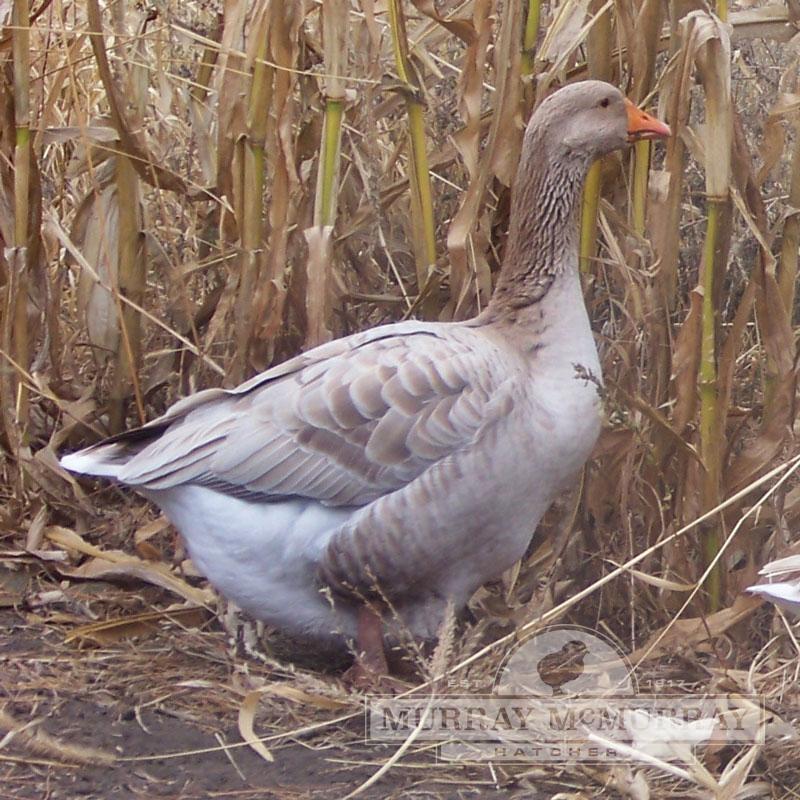 The smaller size of the American Buff Goose produces a bird with little meat. However, the geese are excellent mothers which is ideal for those who seek to raise geese without having to deal with an incubator and brooding.
The smaller size of the American Buff Goose produces a bird with little meat. However, the geese are excellent mothers which is ideal for those who seek to raise geese without having to deal with an incubator and brooding.
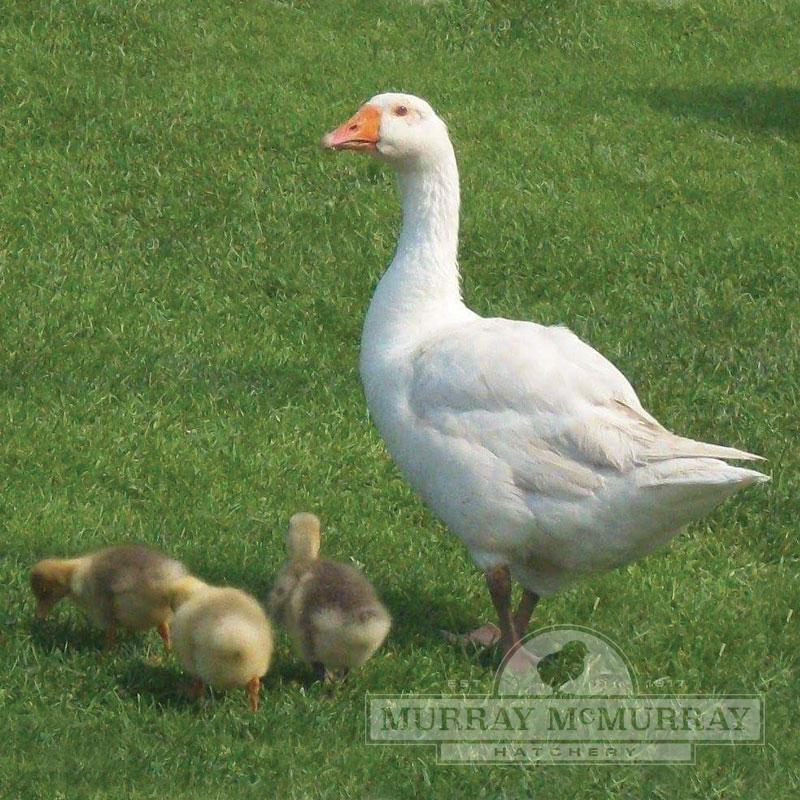 The Embden goose is the most common meat variety due to their white feathers and ability to pluck clean, producing a beautiful meat product.
The Embden goose is the most common meat variety due to their white feathers and ability to pluck clean, producing a beautiful meat product.
 The Chinese geese are known to be excellent guardians, however, that’s not all they are good for. This breed enjoys foraging making their meat quite flavorful. Unlike the breeds mentioned above, the Chinese geese produce the least greasy meat of all the geese except Pilgrims. Crossbreeding the Chinese with the Pilgrim goose provides a bird which is more economical to raise.
The Chinese geese are known to be excellent guardians, however, that’s not all they are good for. This breed enjoys foraging making their meat quite flavorful. Unlike the breeds mentioned above, the Chinese geese produce the least greasy meat of all the geese except Pilgrims. Crossbreeding the Chinese with the Pilgrim goose provides a bird which is more economical to raise.
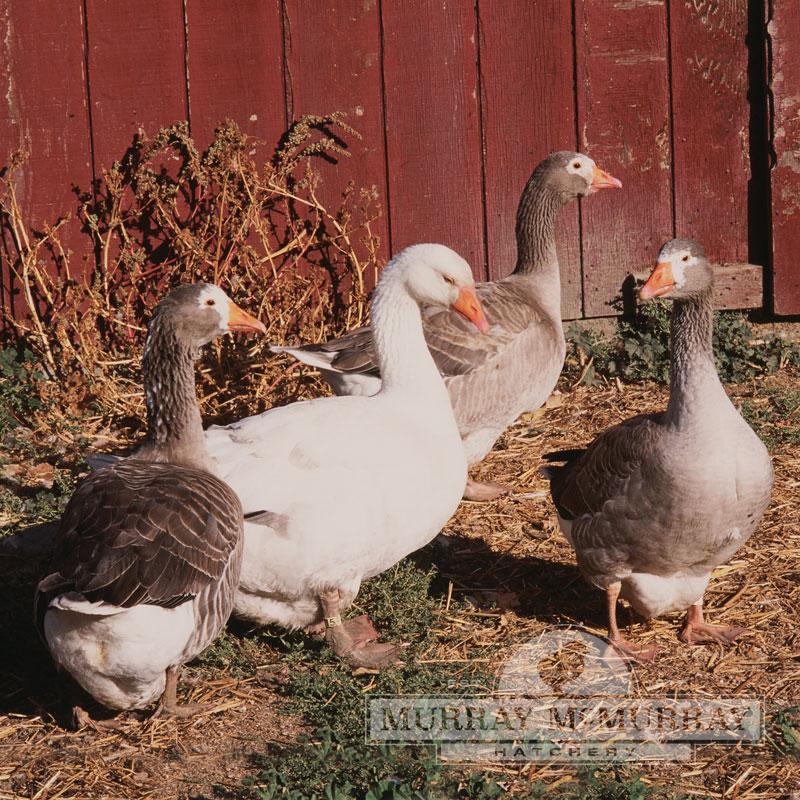 The Pilgrim goose is a medium size bird and a great roaster. They are great foragers which add incredible flavor to the meat. Much like the Chinese goose, the Pilgrim produces less fat than other geese breeds.
The Pilgrim goose is a medium size bird and a great roaster. They are great foragers which add incredible flavor to the meat. Much like the Chinese goose, the Pilgrim produces less fat than other geese breeds.

Ann Accetta-Scott is a homesteader in Tennessee raising poultry, goats, cows and rabbits. She is an educator and encourages those who are seeking to live a more sustainable lifestyle. Ann is also the face behind the website A Farm Girl in the Making and author of The Farm Girl's Guide to Preserving the Harvest.
Photos by Ann Accetta-Scott.

